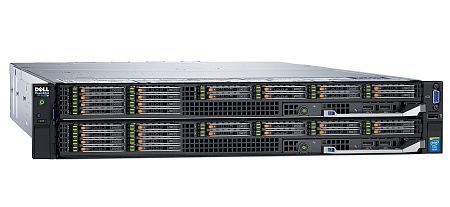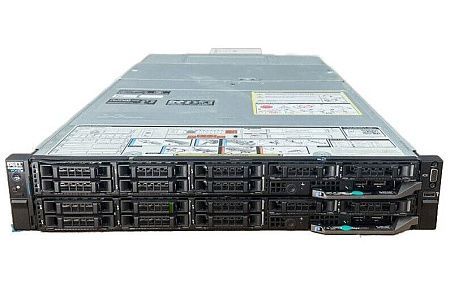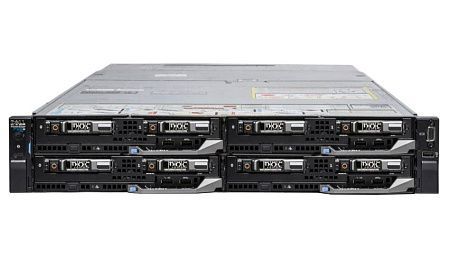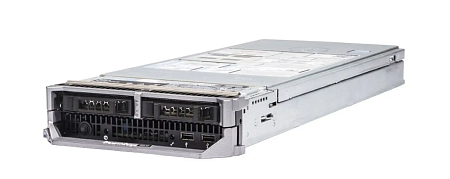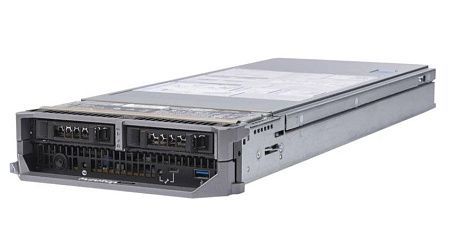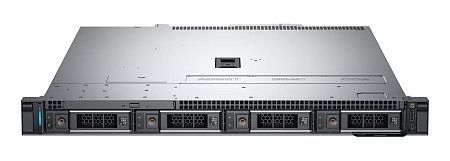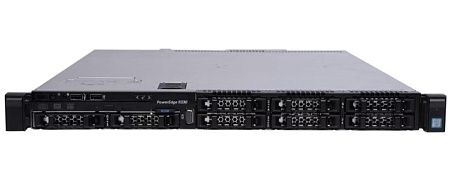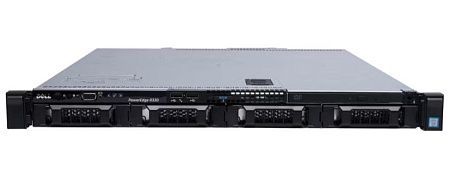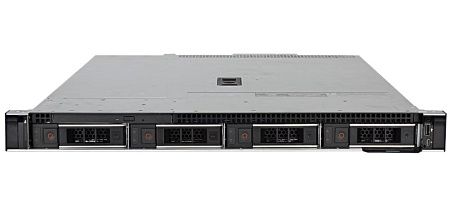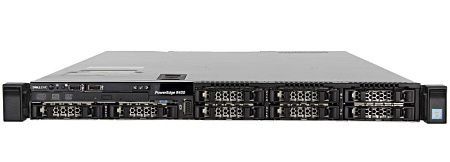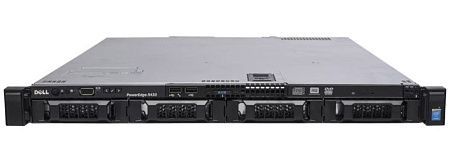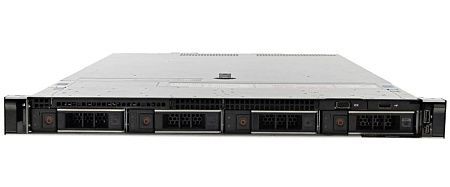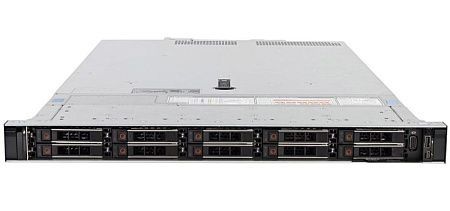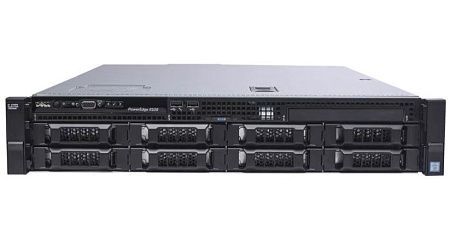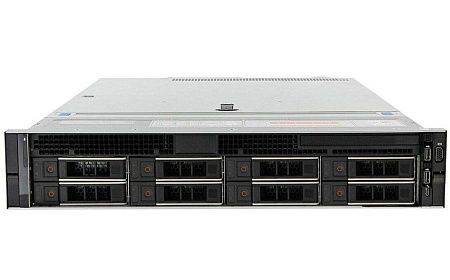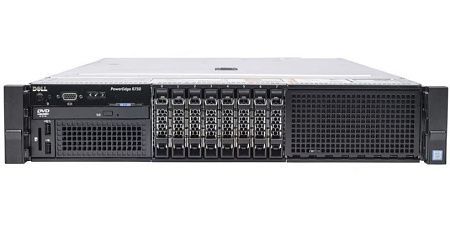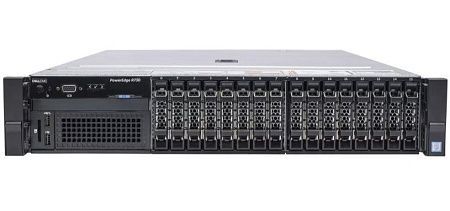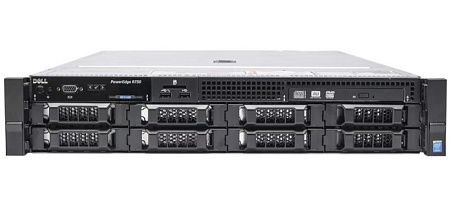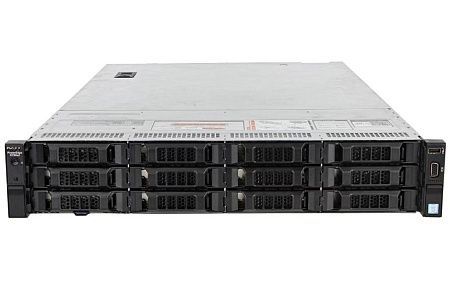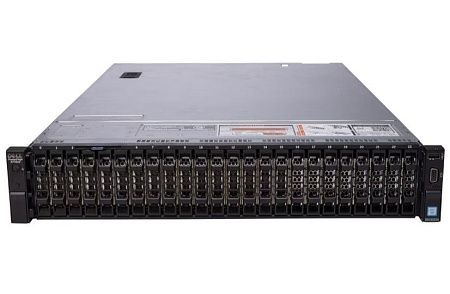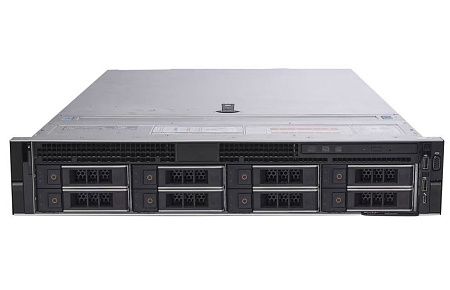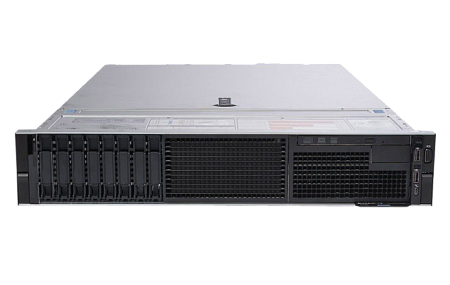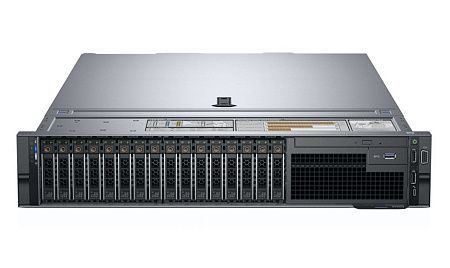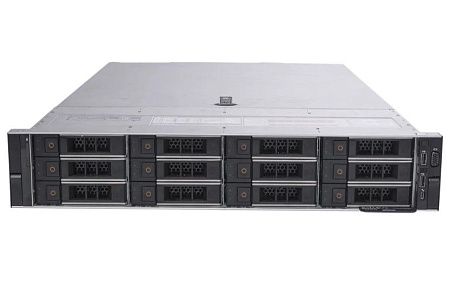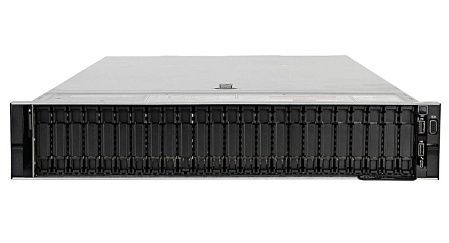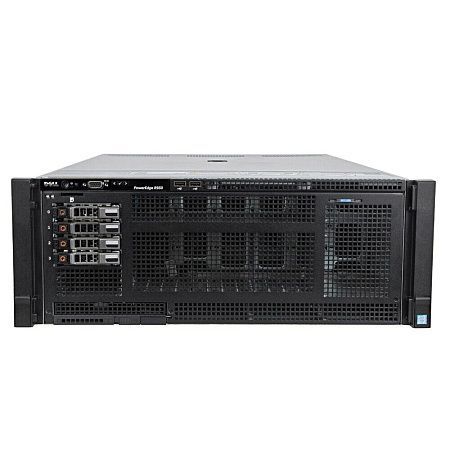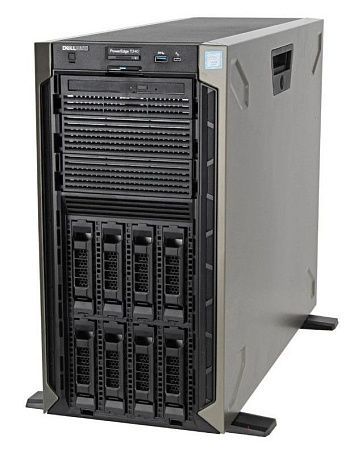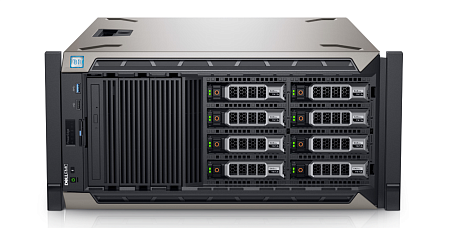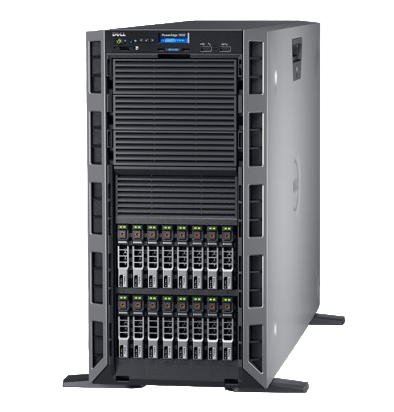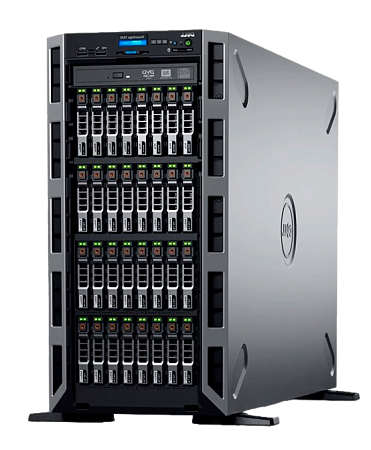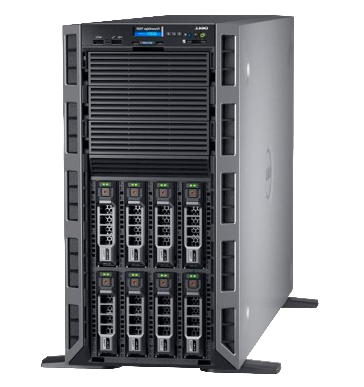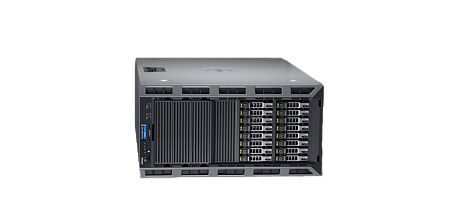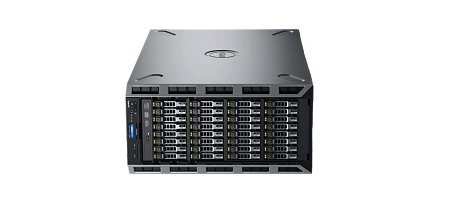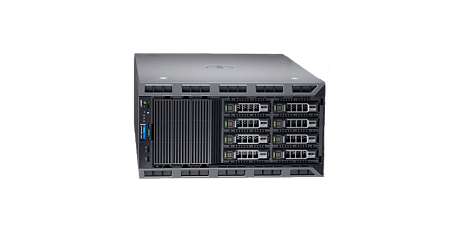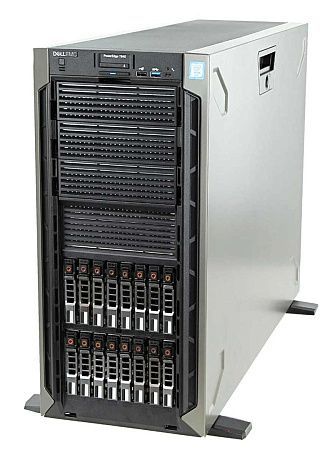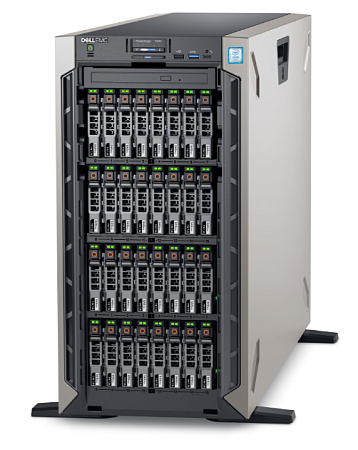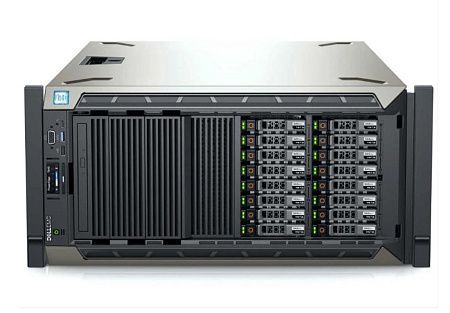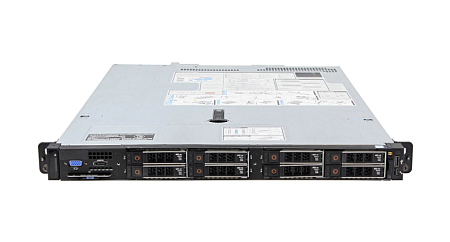Today, in the era of business digitalization, choosing the right server equipment is the most important step in ensuring the reliability and high performance of the IT infrastructure. Choosing the most suitable server is also a key decision for any enterprise, as the server performs a number of basic functions such as data storage, information processing, support for mission-critical applications, etc.
Dell PowerEdge servers are characterized by high levels of reliability, flexibility and performance. Dell has been developing and improving this series of servers for a long time to provide solutions suitable for any requirements of various business scenarios, including data centers, small companies and large corporations.
In this article we will consider such important aspects as the model range, technical characteristics, as well as special requirements specific to various business environments. Knowing this key information is essential when choosing a Dell PowerEdge server.
- Overview of the Dell PowerEdge server line
- Determining business needs
- Primary factors for choosing a server
-
Comparative analysis of PowerEdge models
- Choosing the appropriate model depending on the situation in which it will be used
- Dell PowerEdge Rack Server Models
- Dell PowerEdge Server Tower Models
- Dell PowerEdge Modular Server Models
- Dell PowerEdge Specialized Server Models
- Detailed review of Dell PowerEdge Rack Server Models
- Detailed review of Dell PowerEdge Tower Server Models
- Integration with existing IT infrastructure
- Budget and cost of ownership
- The Future of Dell PowerEdge Servers
- Conclusion
Overview of the Dell PowerEdge server line
History and evolution of the PowerEdge line
The Dell PowerEdge series of servers is one of the most famous and recognized in the IT industry. The initial developments date back to the 90s of the last century. During this period of time, Dell PowerEdge has evolved from simple computing machines to powerful and flexible solutions that are currently required to perform the most complex tasks of modern business. Dell invests a lot of effort in improving the energy efficiency, performance and manageability of its servers, as well as introduces the latest updates and innovations in a timely manner in order to meet constantly changing user requirements and market trends.
Main models and their characteristics
The PowerEdge line includes a wide range of different models, each of which is specifically designed for specific use cases. For example, R series models (R750, R650) are an ideal rack server option for scalable business apps and virtualization. The T series (such as the T350), on the other hand, provides tower servers configured to meet the needs of small business and office applications. Thus, each server model in the PowerEdge line has a set of unique characteristics.
New technologies and innovations
High level of performance and ease of management of PowerEdge servers is achieved through the constant introduction of new technologies. For example, a wide range of server models are equipped with the latest generation Intel Xeon processors. These processors guarantee high operating efficiency and data processing speed with low power consumption. Moreover, automated management and monitoring technologies (for example, Dell EMC OpenManage) are widely used in order to simplify server maintenance and increase their reliability.
Determining business needs
Analysis of server requirements
To choose the server that is most suitable for your business, you must first clearly define the basic needs of your business, including both current tasks and forecasts for the future (development and expansion of your organization). We recommend taking into account key parameters such as performance, scalability and security level. The speed and efficiency of data processing, as well as the quality of application support depend on the level of performance. Scalability impacts business development and growth opportunities. Reliable protection of your data and IT infrastructure from external threats is achieved through the availability of security measures, an integral component in the modern world of technology.
Features of using servers in various business sectors
The requirements for servers depend on the specific area and focus of the business. For example, high performance and reliability are key metrics for cloud computing and hosting organizations. For corporate databases, the reliability of data storage, as well as the speed and security of data access, are of paramount importance. The issues of cost and convenience of server management are also quite relevant for small and medium-sized businesses. Thus, it is very important to take these characteristics into account when analyzing business needs, which will later help you choose the most suitable server for the goals and objectives of your business.
Primary factors for choosing a server
Processor, memory and data storage: what needs to be considered
One of the key factors when choosing a server is its hardware configuration. The processor determines the overall system performance. The choice of a specific server model should be based on the required data processing volumes. The speed of processing requests and performing other tasks, as well as the ability to simultaneously work with large amounts of data, directly depend on RAM. Data storage requires close attention as well. Here we are talking about components such as disk types (HDD or SSD), the amount of disk space, backup capabilities and speed. Thus, high level of efficiency, reliability, security and scalability of the server largely depend on the correct choice of the components described above.
Importance of availability and reliability of service support
Reliability and availability of service support are indispensable parameters for any server equipment. Availability of reliable service support is one of the most important factors to consider when choosing a Dell PowerEdge server. Availability and high quality of service support will ensure an effective and quick solution to any technical problems. You will be able to quickly respond to requests, benefit from the assistance of highly qualified staff, and also get access to software and firmware updates.
Comparison of performance and energy efficiency of server models
The concepts of productivity and energy efficiency are inextricably linked, especially now when energy prices are constantly rising and information about environmental problems is becoming publicly available. A high level of server performance can ensure more efficient and faster execution of tasks and projects, while reducing processing time and increasing overall productivity. At the same time, servers with a high level of energy efficiency reduce operating costs and limit the negative impact on the environment. We also want to point out the importance of finding a balance between performance and energy efficiency when choosing a Dell PowerEdge server.
Comparative analysis of PowerEdge models
Detailed comparison of the most well-known models
The different Dell PowerEdge models are more or less likely to meet your business needs. Next, we will consider several popular server models of the PowerEdge line:
PowerEdge R740. The R740 model is equipped with Intel Xeon processors and supports up to 3TB of RAM. Due to its high level of performance and scalability, the R740 is an excellent solution for performing complex calculations and processing large amounts of data.
PowerEdge R640. This server is ideal for environments that require high-density computing power in a space-constrained environment. The R640 server offers the perfect balance of performance and energy efficiency, which is so necessary for data centers and HPC environments.
PowerEdge T40. This tower server is a great solution for small and medium-sized enterprises and offices working with basic apps and file services.
Advantages and disadvantages
Next, we will consider the pros and cons of each model:
R740 provides excellent efficiency and scalability, but the prices for this model may be too high for small companies or simpler applications.
R640 offers an excellent combination of performance and space savings, however, it is not the best option for tasks requiring extended RAM or a large amount of free storage space.
T40 is a more economical option, which is suitable for general requirements, however, its performance level may not match more complex tasks and applications.
Choosing the appropriate model depending on the situation in which it will be used
When choosing a specific model of the Dell PowerEdge line, it is important to consider both the current requirements of your business and forecasts for development or expansion. Factors such as the required performance level, expected data volumes, virtualization capabilities and budget constraints are recommended to be taken into account to select the most suitable model for your business requirements.
There are several main categories of Dell PowerEdge servers. Among them are Rack Models, Tower Models, Modular Models, as well as some specialized series, including C Series, HS Series, XE Models and XR Models. Each category features a variety of models specifically designed for specific needs or use purposes.
We will begin a detailed examination of models for further comparison with rack servers, since they have wide functionality and are considered the most popular in the PowerEdge line.
Dell PowerEdge Rack Server Models
Latest generation (16G, 15G, 14G)
PowerEdge R660, R660xs, R665, R6625. These high-performance servers are optimized for working with large amounts of data and performing complex calculations. These models are an excellent solution for companies whose main activities require high-speed data processing and work with virtualization projects.
PowerEdge R760, R760XA, R760xd2, R760xs, R7615, R7625. The high performance and scalability of servers in this line makes them an excellent option for databases and apps with high requirements.
PowerEdge R860, R960. These servers are highly powerful. They are the most suitable option for research centers and large companies and corporations, as these servers are specially designed to perform complex computing tasks. They are the most suitable option for research centers and large companies and corporations, as these servers are specially designed to perform complex computing tasks.
PowerEdge R250, R350, R450, R550, R650, R650xs, R6515, R6525, R750, R750xa, R750xs, R7515, R7525. These models offer a good balance of energy efficiency, performance, scalability. In fact, they are universal servers for a large number of business applications and can be used in medium and large organizations.
PowerEdge R240, R340, R440, R540, R640, R6415, R740, R740xd, R740xd2, R7415, R7425, R840, R940, R940xa. These servers provide superior performance and scalability for a wide range of business requirements. They are an excellent solution for medium and large databases, as well as for virtualization tasks. They can also be widely used in advanced computing environments.
Taking into account the above-mentioned factors is necessary when choosing a specific server model, since each of them is designed for certain use purposes.
Dell PowerEdge Server Tower Models
Latest generation (16G, 15G, 14G)
PowerEdge T560. These are powerful, scalable tower servers specially designed to handle large amounts of data and complex calculations in conditions of limited rack space.
PowerEdge T150, T350, T550. These models are the best option for small and medium-sized enterprises. Due to the successful combination of performance and scalability, these models are great for file servers, not large databases and office applications.
PowerEdge T40, T140, T340, T440, T640. These tower servers are optimized for data storage and basic apps. They are characterized by a high level of reliability and ease of management, and therefore are the best option for small businesses and branches of large corporations.
Dell PowerEdge Modular Server Models
Latest generation (16G, 15G, 14G)
PowerEdge MX760c, MX750c, FC640, M640, M640 (for PE VRTX), MX7000, MX740c, MX840c, MX5016s. These modular server solutions are widely used by companies requiring improved scalability and high density of computing resources. These models offer a wide range of features for rapid infrastructure expansion, and for this reason are considered perfect solutions for data centers and large organizations.
Dell PowerEdge Specialized Server Models
C, HS, XE and XR series
C Series (C6600, C6615, C6620, C6520, C6525, C4140, C6400, C6420). The servers of this series are optimized for intensive workloads and are capable of providing a high density of computing power. These server models are originally designed for specialized computing tasks, such as AI and HPC.
HS Series (HS5610, HS5620). These servers are widely used for data storage and high-performance tasks, as they guarantee high storage density and scalability.
XE Models (XE8640, XE9680, XE8545, XE2420, XE7100, XE7420, XE7440) and XR Models (XR5610, XR7620, XR8000r, XR8610t, XR8620t, XR4000r). These server models are specially designed to work in harsh environments, including AI-related projects and industrial application.
Thus, Dell offers a wide range of servers for specific purposes and use cases, including solving a variety of IT tasks.
Detailed review of Dell PowerEdge Rack Server Models
PowerEdge R660, R660xs, R665, R6625
R660 and R660xs. These dual-socket servers offer a wide range of capabilities for high-performance computing and large data processing. These models are an excellent option for virtualization and high-load applications.
R665. The server is designed to perform resource-intensive tasks. It is especially common in analytics and data processing scenarios.
R6625. This model provides the flexibility and scalability required for different workloads.
PowerEdge R760, R760XA, R760xd2, R760xs, R7615, R7625
R760 series. These servers offer the high level of performance and scalability required for complex applications and databases. This is a great option for large organizations.
R7615, R7625. High-performance models that can handle large data volumes and high workloads.
PowerEdge R860, R960
R860. This four-processor server is an excellent solution for research organizations and large companies.
R960. It is characterized by maximum level of efficiency and scalability that is especially useful for apps requiring large amounts of memory and high performance.
PowerEdge R250, R350, R450, R550, R650, R650xs, R6515, R6525, R750, R750xa, R750xs, R7515, R7525
R250, R350, R450, R550. These server models are universal solutions for various business applications, as they are able to offer an excellent balance of performance and scalability.
R650, R650xs, R6515, R6525, R750, R750xa, R750xs, R7515, R7525. These are high-performance servers that guarantee the high level of power needed to work with large amounts of data, virtualization scenarios, as well as complex applications.
PowerEdge R240, R340, R440, R540, R640, R6415, R740, R740xd, R740xd2, R7415, R7425, R840, R940, R940xa
R240, R340, R440, R540. These models are an excellent solution for small and medium-sized companies. They provide a high level of reliability and manageability for file servers and basic apps.
R640, R6415, R740, R740xd, R740xd2, R7415, R7425. They offer a high level of scalability and efficiency. They can be the best choice for medium and large databases, as well as for advanced computing environments.
R840, R940, R940xa. The functionality of these servers makes it possible to use them to work with the most demanding applications. These models are also useful for analyzing large amounts of data and working with high-performance computing.
Detailed review of Dell PowerEdge Tower Server Models
PowerEdge T560. It is a high-performance scalable tower server equipped with the latest processors. It also provides a wide range of improved data storage capabilities. The PowerEdge T560 is optimized for handling large amounts of data and complex calculations. This server is an excellent solution for large organizations and data centers.
PowerEdge T150, T350, T550
T150. This is the entry level of tower servers. It offers a level of performance sufficient for file services and basic apps. This server is designed for home workstations and small offices.
T350. This improved server model provides higher level of performance and scalability. It is an excellent option for small and medium-sized business applications.
T550. This model is the most suitable solution for more demanding applications and environments.
PowerEdge T40, T140, T340, T440, T640
T40. This is a basic tower-type server, widely used among small businesses and branches of large organizations. It provides easy management of basic applications and reliable data storage.
T140. In fact, this is a slightly updated version of the T40, which will be a good choice for small offices and business applications.
T340. A more powerful server that offers a higher level of efficiency and more data storage capabilities. It is a perfect option for small and medium businesses.
T440. This server is designed to work with complex applications that require increased performance and scalability.
T640. This is the most powerful tower server in the PowerEdge line. It is an excellent solution for large organizations, as it can provide a high level of performance and scalability.
Integration with existing IT infrastructure
Compatibility with operating systems and applications
The ability of the server to integrate with your IT infrastructure is one of the most important aspects to consider when choosing a specific model. Dell PowerEdge servers can support a large number of operating systems (+ various Linux distributions, Windows Server, and many other specialized OS). To ensure maximum efficiency and smooth operation, the server you choose must also be compatible with the main applications and databases used in your organization.
Updating and scaling servers
The scalability factor is most important for a growing business. Dell PowerEdge servers provide a wide range of scaling options. For Dell PowerEdge users the following scaling features are available:
- adding additional processors,
- increasing the amount of memory,
- expanding data stores.
These features allow servers to adapt to constantly changing business requirements and eliminate the need for frequent hardware replacement.
Management and maintenance of the server infrastructure
Comprehensive server management is the key to achieving maximum reliability and performance of your IT infrastructure. Dell PowerEdge servers are equipped with a wide range of special tools and technologies that make the management process easier (Dell EMC OpenManage system is included). These tools provide users with the following capabilities:
- equipment condition monitoring,
- centralized server management,
- timely and effective response to possible technical problems.
Integrating Dell PowerEdge servers, which provide scalability and modernization flexibility, with your IT infrastructure is critical to maintaining the stability and future development of your business. Thus, taking into account these factors, it will be easier for you to choose the most optimal solution for your business, including current needs and forecasts for further development.
Budget and cost of ownership
Analyzing the relation between price categories and functionality
Your business's budget constraints should also be taken into account when choosing a server. Servers of the PowerEdge line are available in various price categories, depending on their performance level and specific functions. For example, for small businesses or companies with a limited budget, economical models (PowerEdge T340) are an excellent option. Processing large volumes of data, performing virtualization tasks and other complex calculations may require more powerful servers, which are significantly more expensive. Among such models, the R750 or R650 can be noted.
Total Cost of Ownership (TCO) and Return On Investment (ROI)
Total cost of ownership is an important factor when buying a Dell PowerEdge server along with the original purchase price. TCO includes the following expenses:
- energy consumption,
- maintenance,
- potential for future expansion.
Models with a higher initial cost are considered the most suitable option for long-term operation, as they have lower maintenance costs and can be improved without substantial additional investments. It is very important to consider Return on Investment when estimating the cost of the server. This indicator determines the possible impact of the purchased server on the efficiency and profitability of your business. High-performance servers are capable of increasing the speed of task completion while reducing downtime, as well as improving performance level, which can have a positive impact on ROI.
Optimizing costs and choosing the right model
In order to optimize costs, it is necessary to conduct a detailed analysis of current needs and projects for further development. Choosing a more modern server model with the possibility of further scaling can reduce the overall cost of maintaining an IT infrastructure. To reduce your initial investment in server hardware, it's also a good idea to consider financing and lending options offered by many vendors, including Dell.
Thus, in order to choose the most suitable Dell PowerEdge server model in the price category, it is important to take into account certain limitations of your business, as well as analyze the total cost of ownership of the equipment.
The Future of Dell PowerEdge Servers
Upcoming updates and trends in the development of server equipment
Today, technology is developing at a significant pace, which means that the future of Dell PowerEdge depends on current trends in the technology services market. In the near future, Dell servers will become more compact, while offering improved performance and energy efficiency, as well as increased processing power. Management automation and high security level will also be priorities for future server development, in particular to protect against the cyber-attacks that are common today.
The impact of Machine Learning (ML) and Artificial Intelligence (AI) on the future of servers
Dell PowerEdge servers have already begun to implement ML and AI technologies to automate a wide range of processes. These technologies will be even more advanced in the future, allowing servers to analyze their own work, automatically adapt to different conditions of use, as well as predict and prevent possible problems and threats in a timely manner.
Preparing for future trends and innovations
If you are planning to purchase Dell servers, it is very important to know how to prepare your IT infrastructure for future progress. It is recommended to choose server models that provide scalability and update deployment capabilities. Don’t forget about investing in training your employees and introducing innovative technologies. It is also important to keep up with the latest updates and trends in the technology world in order to increase the productivity and profitability of your equipment.
The future of Dell PowerEdge servers can already be called promising. Users can expect a wide range of new technologies and features that will significantly increase the level of security, reliability and efficiency of servers. Thus, the competitiveness and flexibility of the IT infrastructure depends on the further development of server equipment, including the introduction of new technologies and updates.
Conclusion
Selecting a server is a complex and multi-step process that requires taking into account a wide range of different factors. It should be noted once again that the choice of a Dell PowerEdge server should be based on a comprehensive analysis of both your current business requirements and future development projects. Critical metrics such as efficiency, technical support availability, scalability, budget requirements, as well as total cost of ownership must be taken into account in order to select the right server. Dell PowerEdge servers are available in a wide range of models, each of which is suitable for specific business requirements. To choose the most suitable Dell PowerEdge model, we recommend taking into account all of the above factors, further studying the technical specifications and reviews of Dell PowerEdge models, as well as using additional information about the specific server that interests you the most. Don’t forget about the possibility of getting advice from IT specialists, since a properly selected server infrastructure is an important investment in the future of your business.
Specialists of our company are ready to help you purchase the server and select the necessary server configuration for any required task.



